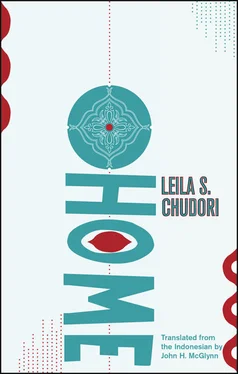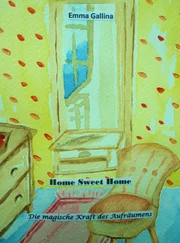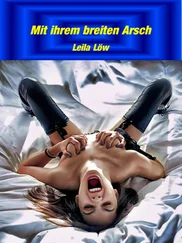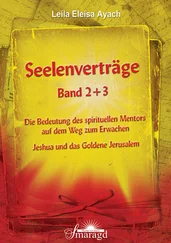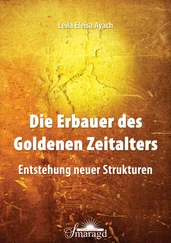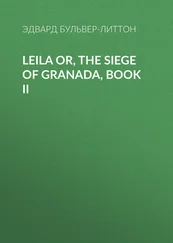If you open the encyclopedia and look up the name Louis-Jacques-Mandé Daguerre, you’ll find that it was he who partnered with Charles Marie Bouton in 1822 to construct the first diorama in Paris. You will read that their creation was intended as a tool for entertainment and education — and not, as it were, a device to project a version of history that was supposed to be accepted as true.
I watch those two grade school students, their foreheads still pressed against the glass, entranced by the scenes of torture. And then I recall a time twenty years earlier, when Bimo and I were in fifth grade.
I remember the date very clearly: September 30, 1975, the tenth anniversary of the events in 1965. I can see my class being herded onto a bright yellow bus, each one of us carrying a knapsack containing a notepad, pencils, a stuffed bun, and drinking water. We’re taken to far eastern Jakarta for a tour of the Sacred Pancasila Monument. Arriving there, the lot of us are ordered out of the bus and told to line up in straight and orderly fashion.
Just that one visit was enough for me to have the whole scene memorized. The first thing I remember about the site is a kind of suspended stage on which life-size bronze statues of the seven military officers who were killed that night are standing. Posed in heroic positions, they project an air of supreme authority.
We are told to gather around the woman guide and listen to her as she repeats all the names and incidents we’d often been told of before.
As is well known and recorded in history, the generals who are depicted here were abducted and tortured, and their bodies thrown into a well called Lubang Buaya, the infamous Crocodile Pit. The blame for this rests solely on the shoulders of the PKI, the Indonesian Communist Party…
Unfortunately, that statement was not true. The blame didn’t rest solely on the shoulders of Communist Party members. It was transferred to their friends and families as well, and even to their children who hadn’t yet been born in 1965. All were sinners; all carried a permanent stain.
I became frightened and started to shake. Bimo, too, and we didn’t know why. Was it from hearing that scary story? Or from the fear that the guide might know who our fathers were? Bimo and I focused our attention on the white streaks in the guide’s hair. In trying to count the number of streaks, this little game made us less nervous and the tour pass by more quickly.
Over the years, the voice of the woman guide grew more tremulous as she aged. I sometimes wondered if she was doing that job because she needed extra money for her family, or out of some kind of zealot-like dedication to the New Order government and its monument to history. In the end, I concluded that she was there just doing what she had been told to do, without any real understanding of what she was saying. I bet that if she were asked, she couldn’t answer the question of who the real owner of history is.
What else did Bimo and I do when we were there? For one thing, we’d stand next to each other beside a support pillar and compare each other’s height. Although Bimo is older than me, born the year before I was, for as long as we can remember, I’ve always been taller than him. For all the world, we looked just like those two grade school boys who have their foreheads pressed to the glass in front of the diorama at the museum that opened to the public this past year. In addition to the diorama, which extends the length of the main hall, the museum also contains, as illustrations of historic scenes, a number of reconstructed rooms, sites where various nefarious meetings were held and acts of torture were perpetrated. I stand there, staring and asking myself a question. Twenty-eight years ago, the question was a simple one: how much truth is reflected in the diorama?
To give my question a more academic or philosophical sound, I might ask instead who are history’s owners? Indeed, who is it that determines who is a hero and who is a traitor? Who is it that determines the accuracy of events? Is it the historians who were hired and paid by the government to write the official history of September 1965? Or is it that far smaller number of historians and intellectuals who have dared to ask about issues not recorded in official history? I know several Indonesian historians who have long been itching to dig up, uncover, and refute the New Order’s official version of history. I know of their grumbling — in academic terms, that is — about the twisting of history and the amplification of certain events so that particular individuals emerge as heroes.
One historian wrote in an academic journal I read that the political situation in 1965 was not nearly as black and white as might be inferred by the diorama at Lubang Buaya or as depicted in the state-produced film that we were obliged to view every year. I also know the views of friends of mine in the mass media who have long seen as problematic the government’s version of history that has been shoved down the throats of school children for now going on thirty years.
My sister Kenanga has often said that history is owned by the holders of power, not just in Indonesia, but in all authoritarian regimes. Even countries in the West that are thought to be democratic tend to shape history as they perceive it to be. But at least their historians are able to be fairly independent-minded. Any overt distortion of historical facts would cause outrage in the academic quarter.
The way I see it, history is owned not just by the power holders but also by the materialistic middle class who cuddle up with them. I more often use the term “power grabbers” to describe the former because the people who have been in power in this country for these past few decades no longer have the right to govern. Meanwhile, the middle class, which emerged during this same period of time — and which does have the choice to be critical — remains incapable of questioning the legitimacy of the corrupt New Order government.
And now here I am, at the age of twenty-eight, and the government is unfurling its flag further with the expansion of this “sacred” monument to include a Museum of the Treachery of the Indonesian Communist Party.
Maybe it’s just easier for the middle class to act as a fan of or to play a role in the New Order government than to exercise their critical faculties. But the only possible way to do so is to pretend to be deaf and blind as the government continues to bury rotting corpses and to perch like vultures on victims’ graves. The middle class has the education. Imagine if they actually had the nerve and integrity to speak up? I suppose that they, too, would end up like the signatories of the Petition of 50 after they protested against Soeharto’s continued rule. If the president can silence Nasution, Ali Sadikin, Mohammad Natsir, and other influential people, what would he do to people less powerful?
Imagine!
Standing in this museum, I find myself being forced to expunge all traces of my father’s memory.

Most of what I know about my father I know from stories told to me by my sisters, Kenanga and Bulan, and Om Aji. My own memory of my father is much more vague. I have just snippets of an image of him holding me, his youngest child and only son, in his arms and of me sitting in his lap.
I was three when the military arrested my father. He was imprisoned but never put on trial. He was executed when I was five. Even the memory of that time is a vague one, but somewhere inside of me I can see him and my mother with me on her lap, and Kenanga and Bulan crying.
I have a faded photograph which I carry with me in my wallet. It’s always been a source of strength for me, for both my body and soul. It’s a picture of my parents and Om Dimas that Ibu said was taken some twenty-some years ago at the wedding of Om Aji and Tante Retno. The picture has yellowed, as if wasted by jaundice and revenge; but in the light that is visible in my father’s eyes, I find assurance that even if we have nothing else in this life except goodness, we will survive.
Читать дальше
